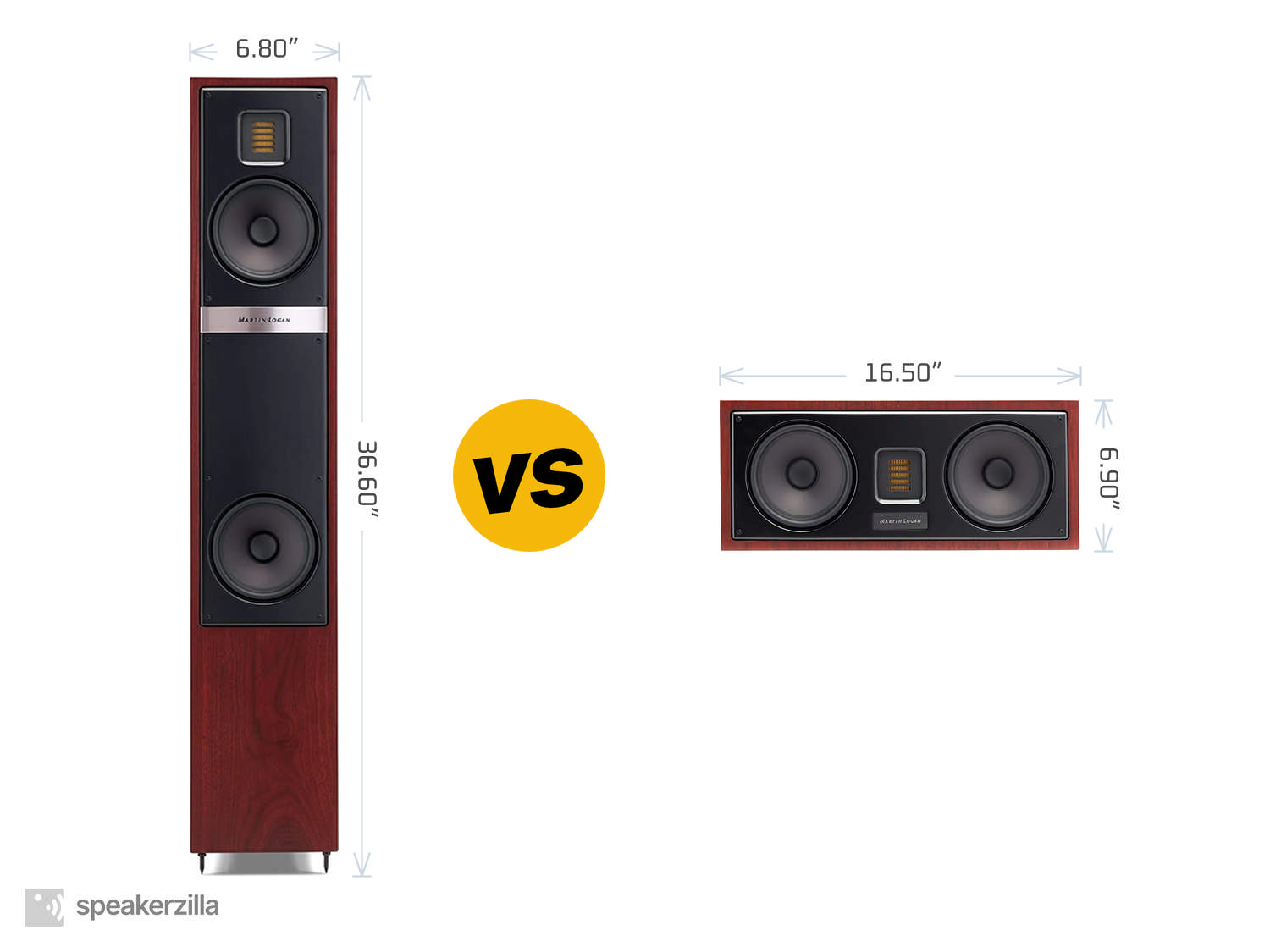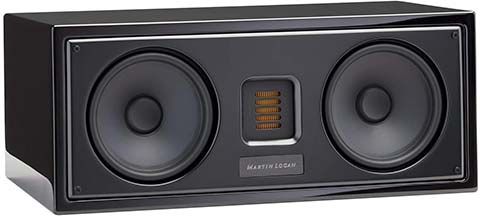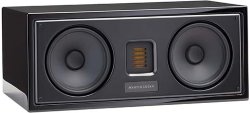MartinLogan Motion 20i vs. MartinLogan Motion 30i

| MartinLogan Motion 20i Tower Speaker | MartinLogan Motion 30i Center Channel Speaker |
| MSRP | |
| $2000 | $900 |
| Dimensions (H × W × D) | |
|
36.60” × 6.80” × 11.70” 930mm × 173mm × 297mm |
6.90” × 16.50” × 10.50” 175mm × 419mm × 267mm |
| Power Type | |
| Passive | Passive |
| Frequency Response | |
| 46-25,000 Hz | 65-25,000 Hz |
|
Amazon.com
|
Amazon.com
|
Key Takeaways
TLDR Summary: In the realm of pristine audio, the MartinLogan Motion 20i towers excel with their expansive soundstage and articulate bass, ideal for immersive stereo listening. Contrastingly, the Motion 30i center channel, with its precise voice reproduction and balanced midrange, anchors home theater dialogue. While the 20i's boast a floor-standing silhouette for stereo depth, the 30i's compact design is crafted for seamless integration into multi-channel systems. Both share MartinLogan's acclaimed Folded Motion tweeters for crisp highs. Choosing between the 20i and 30i hinges on user preference for music-focused setups or a cinematic experience, respectively.
Speaker Comparison
When diving into the lush world of high-fidelity audio, the design philosophy behind a speaker series can often give us a glimpse into the sonic journeys they aspire to offer. This is certainly the case with MartinLogan's Motion series, which is renowned for its blend of audiophile precision and emotive presentation. Today, we're comparing two integral pieces of this series: the Motion 20i Tower Speaker and the Motion 30i Center Channel Speaker, siblings in design but each with their own unique charms.
Design Aesthetics and Build Quality
Both the Motion 20i and 30i share MartinLogan's sleek, modern aesthetic, but their forms follow their functions. The Motion 20i is a slender tower speaker with a footprint that is unobtrusive in most living spaces, standing with a confident but not overpowering presence. Conversely, the Motion 30i, designed to anchor the dialogue and action of your favorite films, is more compact and intended to fit seamlessly within a home theater setup. Each model exudes high build quality, with the Motion series' characteristic wood veneer or high-gloss finishes that make them not just speakers, but pieces of room-enhancing furniture.

 (at Amazon.com)
(at Amazon.com)Sonic Signature and Performance
While both the Motion 20i and the 30i are designed to work in harmony within a surround sound setup, they each bring their own acoustic flavors to the table. The Motion 20i, as a tower speaker, offers a fuller range with deeper bass response due to its larger cabinet and dual woofers. It's engineered to deliver a broad soundstage and is capable of being the star performer in a stereo setup or a key player in a multi-channel system. On the other hand, the Motion 30i center channel is the vocal champion, with a focus on clarity and articulation that ensures dialogue cuts through with precision in a surround mix, thereby anchoring the auditory experience to the on-screen action.
Advanced Technology Integration
MartinLogan's engineering prowess is evident in the advanced technologies integrated into both the Motion 20i and 30i. Each speaker houses the esteemed Folded Motion tweeter, a MartinLogan innovation that delivers lightning-fast transient response and a nuanced yet expansive high-end. This results in a remarkably detailed and smooth treble that is consistent across both models, maintaining the family sound signature. Moreover, the aluminum cone drivers are precision built to render midrange and bass with accuracy and tightness, ensuring that no matter the genre of music or film, the performance is immersive and engaging.

 (at Amazon.com)
(at Amazon.com)The distinctions between the two become more evident when considering their intended roles. The Motion 20i, with its greater scale and frequency range, is tuned to provide a more immersive musical experience, ideal for the audiophile seeking a two-channel setup with the ability to convey the grandeur of a live concert. In contrast, the Motion 30i, while still delivering the high-resolution audio that MartinLogan is known for, has optimization for dialogue and on-screen effects, ensuring it integrates flawlessly into a dedicated home theater ensemble.
Compare to similar speakers
Room Integration and Versatility
Room integration is another important aspect where these two speakers differentiate themselves. The Motion 20i has the potential to be the cornerstone of both stereo and surround setups, its performance affected by room dimensions and placement due to its larger size and bass output. Finding the sweet spot for these tower speakers will reward the listener with an expansive sound field. The Motion 30i, being more compact, is less demanding in terms of space and integrates more easily into varied room sizes, particularly excelling in confined spaces where a larger speaker might overwhelm the listener.
In conclusion, whether choosing the MartinLogan Motion 20i Tower Speaker or the Motion 30i Center Channel Speaker, both are stellar examples of MartinLogan's dedication to sonic excellence. The choice between the two ultimately comes down to the listener's needs: the 20i is perfect for those seeking a rich, full-bodied music experience, while the 30i is tailored for crystal-clear dialogue and a seamless home theater sound. Pairing them together, however, offers the best of both worlds—an exquisite blend of music and movie magic that can only come from the thoughtful design and engineering of MartinLogan.
- MartinLogan Motion 20i reviews and FAQs
- MartinLogan Motion 30i reviews and FAQs
Check Current Prices: |
|
|
Amazon.com
|
Amazon.com
|
Affiliate Disclosure: As an Amazon Associate, we earn from qualifying purchases.

